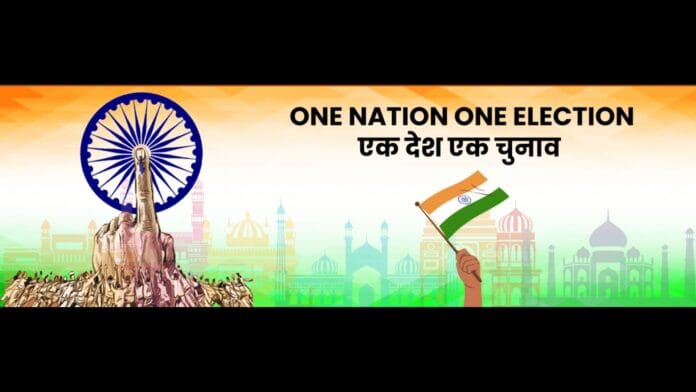One Nation One Election approved by Cabinet
The Union Cabinet’s approval of the ambitious ‘One Nation One Election’ proposal marks a pivotal moment in India’s electoral history. This initiative, championed by the Modi government, seeks to synchronize elections for the Lok Sabha, state assemblies, and local bodies. Let’s explore its significance, the process ahead, potential obstacles, and its applicability to municipalities and panchayats.
What Does ‘One Nation One Election’ Mean?
The proposal envisions simultaneous elections across all levels of governance in India. Traditionally, elections occur in a staggered manner, consuming substantial financial and administrative resources. This initiative aims to streamline the process, reduce electoral expenses, and minimize disruptions to governance and public life.
Why It Matters for India
Proponents argue that frequent elections interrupt governance and economic planning. The Prime Minister has emphasized that simultaneous polls would ensure better utilization of resources and reduce policy paralysis caused by election cycles. Additionally, it could enhance voter turnout by making elections more streamlined.
The expenditure for conducting general elections and state assembly elections in India is substantial and has been rising steadily. Here’s a detailed breakdown:
Current Expenditures
Lok Sabha Elections (General Elections):
- The cost of the 2019 Lok Sabha elections was approximately ₹50,000 crore.
- The 2024 Lok Sabha elections are projected to cost around ₹1,00,000 crore, nearly double the 2019 expenditure. This includes administrative costs, EVM procurement, voter awareness programs, and remuneration for officials
.
State Assembly Elections:
- These costs vary by state but are borne entirely by the respective state governments. However, when conducted simultaneously with Lok Sabha elections, the cost is shared between the central and state governments
Major Cost Drivers
- Increase in Voter Base: Rising population and higher voter registration increase logistical demands.
- Technology and Infrastructure: Costs for EVMs and their maintenance have surged.
- Campaigning: Growing reliance on social media and innovative campaign strategies inflate expenditures.
- Administrative Needs: Deployment of personnel and security measures requires substantial funding
Impact of “One Nation, One Election”
If India implements “One Nation, One Election,” significant financial efficiencies are anticipated:
Cost Reductions:
- Eliminating repetitive logistical setups could reduce expenses by up to 30-40%.
- A single election cycle would streamline administrative and operational processes, cutting redundancy
Potential Challenges:
- The transition to simultaneous elections could incur initial setup costs, such as increased EVM procurement to meet higher demand during the consolidated election period.
While the upfront cost for transitioning to a “One Nation, One Election” system might be substantial, the long-term savings and administrative efficiency could significantly offset these initial expenses.
Constitutional Changes and Articles Involved
Implementing this proposal requires a series of constitutional amendments. Specifically, changes to Articles 83, 85, 172, 174, 356, and related provisions are essential. These articles govern the duration of legislatures, dissolution of assemblies, and imposition of President’s Rule.
The Kovind Committee, which reviewed the feasibility of this initiative, recommended a unified electoral roll and amendments to synchronize elections. Notably, the report suggests 18 constitutional amendments to ensure legal compliance.
Next Steps in the Legislative Process
- Introduction in Parliament: The bill will likely be tabled in the upcoming winter session.
- Ratification by States: At least half the states must ratify the amendments for the changes to be enacted.
- Implementation in Phases: Initially, Lok Sabha and state assembly elections will align, followed by municipal and panchayat polls. Synchronizing local elections will require detailed planning and additional legislative measures.
Comprehensive Requirements and Challenges for Passing the "One Nation, One Election" Bill
India, with its 28 states and 8 Union Territories, faces a multifaceted legislative and political journey to implement the “One Nation, One Election” bill. Below is a consolidated overview of what is required and the potential challenges in its path:
Parliamentary Approval
To amend the Constitution, the bill must secure:
- A two-thirds majority in both the Lok Sabha and Rajya Sabha. This requires at least two-thirds of the members present and voting to favor the amendment.
Current Composition of Parliament:
- Lok Sabha: The NDA, led by the BJP, has 292 seats out of 543, comfortably above the majority mark of 272. This ensures a relatively easier passage in the lower house, assuming coalition unity.
- Rajya Sabha: The NDA holds 112 seats, below the majority threshold of 119 (current effective strength is 237). This necessitates support from non-NDA parties, making bipartisan cooperation critical for success.
State Ratification
- After parliamentary approval, at least half of the state legislatures must ratify the bill. With 28 states, the required threshold is 15 states.
- The NDA governs 17 states, providing a strategic edge. However, non-NDA states controlled by opposition alliances might resist, complicating the ratification process.
Key Challenges
- Opposition Resistance:
- Opposition alliances like INDIA could challenge the bill in both parliament and state legislatures, particularly in the Rajya Sabha where the NDA lacks an outright majority.
- Cross-Party Consensus:
- Transformative reforms like “One Nation, One Election” often encounter ideological barriers, requiring extensive dialogue and compromise.
- State-Level Dynamics:
- Non-NDA states might oppose the bill, citing potential impacts on federalism, electoral fairness, or logistical feasibility.
Despite the NDA’s strength in parliament and among state governments, the ambitious nature of this proposal demands broad consensus and strategic negotiation across political and ideological divides.
Is It Applicable to Municipalities and Panchayats?
Yes, the initiative covers local bodies, including municipalities and panchayats, as per the Cabinet’s roadmap. The plan includes aligning local body elections within 100 days of general elections. This synchronization would ensure a cohesive electoral calendar across the country.
Conclusion: A Landmark Reform in the Making?
While the Cabinet’s approval of ‘One Nation One Election’ is a significant step, the road ahead involves legal, political, and logistical challenges. If successfully implemented, this reform could redefine India’s electoral landscape, promoting efficiency and reducing costs.





[…] Historic Leap: 7 Key Facts About One Nation One Election approved by Cabinet […]